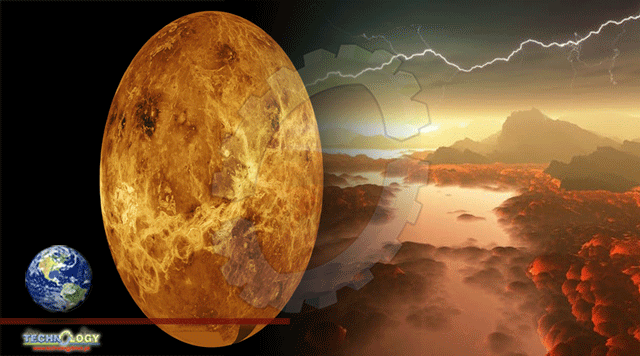Carl Sagan once famously, and sarcastically, observed that, since we couldn’t see what was going on on the surface of Venus, there must be dinosaurs living there. Once humans started landing probes on the planet’s surface, any illusion of a lush tropical world was quickly dispelled. Venus was a hellscape of extraordinary temperatures and pressures that would make it utterly inhospitable to anything resembling Earth life

But more recently, astrobiologists have again turned their attention to the Morning Star. But this time, instead of looking at the surface, they looked in the clouds. And now, a new study from researchers at California Polytechnic, Pomona, has calculated that there is likely a layer in the atmosphere where photosynthesis can occur. Meaning there is a zone in Venus’ cloud layer where life could have evolved.
A thick layer of sulfuric acid clouds surrounds Venus. While those clouds might sound like a horrible place to support life, they do have some advantages. They scatter or absorb most of the harmful UV radiation that hits the planet, similar to the ozone layer’s role on Earth. The clouds are so effective at eliminating UV light that only one type (UV-A) makes it through at all, and even that type is depleted by 80-90% when compared to the level on Earth’s surface.
Even so, life as we know it needs water, not sulfuric acid, to exist, and according to previous calculations, there wouldn’t be enough water to go around. Dr. Rakesh Mogul, the new study’s lead author, showed that instead of being made entirely of sulfuric acid, some of the material in Venus’ atmosphere might be neutralized. These neutralized materials, such as ammonium bisulfate, are more conducive to the existence of water in the atmosphere than had been previously thought.
Proving that water is available is necessary for life, but it is not sufficient. Photosynthesis, the mechanism by which much of life derives its energy, also requires light. Usually, this light comes from the Sun. But on Venus, there might be another abundantly available source of energy for photosynthesis – thermal heat from the planet itself.
Dr. Mogul and his team found that thermal radiation coming from the planet’s lower reaches would be enough to power photosynthesis by itself. It could even do so when that side of the planet was facing away from the sun. So photosynthesis in Venus’ lower cloud levels could be taking place continuously.
That being said, Venus’ emitted thermal energy is much lower compared to the actual sunlight hitting the planet. Energy levels from heat would be similar to sunlight levels experienced near hydrothermal vents in the ocean on Earth. Usually thought of as an alternative fuel source to solar power, these vents also house some life forms that use photosynthesis as their primary energy source. The process does work at even the relatively low energy levels available from just the thermal heat of Venus.
With a combination of reasonable levels of light and water and a lack of harmful UV radiation, the mid- to lower-levels of Venus’ cloud layer are looking more and more attractive to astrobiologists looking for potential life forms close to home. Venus has generally been neglected in terms of exploration priorities than that other, red, rocky planet. But the more studies like this one are released, the more scientists will be clamoring for a look beneath the clouds.
Originally published by Universe Today